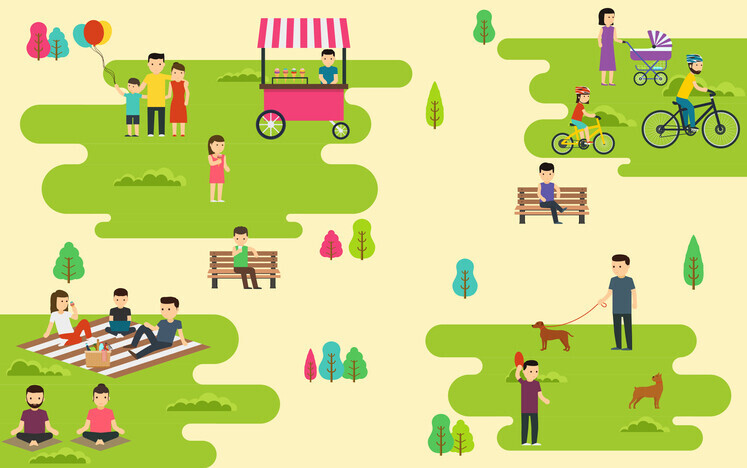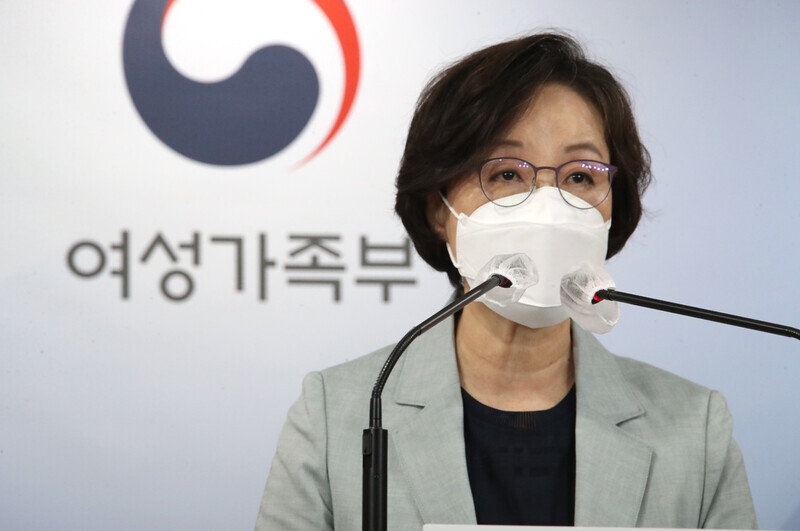hankyoreh
Links to other country sites 다른 나라 사이트 링크
One in 3 S. Korean households is single-person, study reveals

Over the past five years, the share of single-person households in Korean society has risen while the share of married couples and children has fallen sharply.
The Ministry of Gender Equality and Family published the results of its 2020 family study Sunday. The study has been carried out every five years under Article 20 of the Healthy Family Act; beginning with the next study, that interval will be reduced to three years.
This study, the fourth of its kind, was carried out by the Korean Women’s Development Institute and Statistics Korea from Sept. 8-18, 2020, on 10,997 households around the country, covering all household members aged 12 and above.
Single-person households now make up 30.4% of all households in the country, up 9.1 points from 2015 (21.3%).
The nuclear family — a married couple and kids — has long been regarded as the prototypical household in Korean society. But its share of all households has fallen by 12.5 points over the past five years, tumbling to 31.7%.
“The biggest change since 2015 is the sharp decline in families composed of parents and children, which has been regarded as the typical family,” said Lee Jeong-sim, head of adolescent and family policy for the ministry.

This survey was the first to cover non-blood-related households and ask people living alone about their lives. Non-blood-related households are composed of friends, cohabitants, and others who aren’t joined by blood. The survey found that these non-blood-related households accounted for 0.5% of the total.
Viewed through the lens of gender, women (53%) accounted for more single-person households than men (47%). Single-person households broke down into the following age groups: people aged 70 and above (26.7%), people in their 60s (19.0%), people in their 50s (15.4%), people in their 20s (13.6%), people in their 30s (13.0%), people in their 40s (11.3%), and people in their teens (1.1%).
People aged 50 and above accounted for 61.1% of single-person households. The primary reason for living alone was divorce for those in their 50s and 60s and the death of a spouse for those aged 70 and above.
25.2% of single-person households received 500,000-1 million won (US$450-900) in monthly income, while 25.0% received between 1-2 million won (US$900-1800). That means 58.1% of people living alone are making less than 2 million won a month.
“The elderly account for a large proportion of people in single-person households, and they tend to have lower income and poorer living conditions. Our position is that we need to tailor our approach to people’s stage in the life cycle,” Lee said.
The study found that people are growing more accepting of diverse types of families. Approval of opting out of marriage and living alone rose from 32.4% to 34.0%; approval of cohabitation rose from 21.1% to 26.0%; and approval of having children out of wedlock rose from 9.5% to 15.4%.
The percentage who approve of not having children also increased from 21.3% to 28.3%.
There was a striking difference in attitude between age groups. About half of people in their 20s expressed approval of staying single (53.0%), cohabitation (46.6%), and not having children (52.5%). Approval of these behaviors was much lower for people aged 70 and above: 12.1%, 10%, and 7.5%.
A generational divide was also apparent on the question of discontinuing ancestral rites and updating hierarchical and patriarchal forms of address within Korea’s intricate system of family titles.
More than half of people in their 40s and below think it’s time to update patriarchal family titles such as doryeonnim (the unmarried younger brother of one’s husband), agassi (the sister of one’s husband, when younger than oneself), and cheonam (the brother of one’s wife). But that view was only shared by 27.1% of Koreans aged 70 and above.
63.5% of people in their 20s approved of not holding ancestral rites, compared to just 27.8% of people aged 70 and above.
Women still tend to be responsible for housework (70.5%) and childcare and children’s education (43.9%). The age group most likely to equally share housework was those aged 29 and below (56.4%).
The study found that mothers are responsible for all nine areas of childcare for kids below the age of 12, including the school commute and everyday care.
“We’ll work even harder to actively identify and expand support policies for families that are tailored to family type and stage in the life cycle, as well as to improve institutions and build a social consensus so that we can embrace more diverse families,” said Minister of Gender Equality and Family Chung Young-ai.
By Park Go-eun, staff reporter
Please direct comments or questions to [english@hani.co.kr]

Editorial・opinion
![[Editorial] Penalties for airing allegations against Korea’s first lady endanger free press [Editorial] Penalties for airing allegations against Korea’s first lady endanger free press](https://flexible.img.hani.co.kr/flexible/normal/500/300/imgdb/original/2024/0502/1817146398095106.jpg) [Editorial] Penalties for airing allegations against Korea’s first lady endanger free press
[Editorial] Penalties for airing allegations against Korea’s first lady endanger free press![[Editorial] Yoon must halt procurement of SM-3 interceptor missiles [Editorial] Yoon must halt procurement of SM-3 interceptor missiles](https://flexible.img.hani.co.kr/flexible/normal/500/300/imgdb/child/2024/0501/17145495551605_1717145495195344.jpg) [Editorial] Yoon must halt procurement of SM-3 interceptor missiles
[Editorial] Yoon must halt procurement of SM-3 interceptor missiles- [Guest essay] Maybe Korea’s rapid population decline is an opportunity, not a crisis
- [Column] Can Yoon steer diplomacy with Russia, China back on track?
- [Column] Season 2 of special prosecutor probe may be coming to Korea soon
- [Column] Park Geun-hye déjà vu in Yoon Suk-yeol
- [Editorial] New weight of N. Korea’s nuclear threats makes dialogue all the more urgent
- [Guest essay] The real reason Korea’s new right wants to dub Rhee a founding father
- [Column] ‘Choson’: Is it time we start referring to N. Korea in its own terms?
- [Editorial] Japan’s rewriting of history with Korea has gone too far
Most viewed articles
- 160% of young Koreans see no need to have kids after marriage
- 2Presidential office warns of veto in response to opposition passing special counsel probe act
- 3Months and months of overdue wages are pushing migrant workers in Korea into debt
- 4[Editorial] Penalties for airing allegations against Korea’s first lady endanger free press
- 5Japan says it’s not pressuring Naver to sell Line, but Korean insiders say otherwise
- 6S. Korea “monitoring developments” after report of secret Chinese police station in Seoul
- 7Hybe-Ador dispute shines light on pervasive issues behind K-pop’s tidy facade
- 8Inside the law for a special counsel probe over a Korean Marine’s death
- 9USFK sprayed defoliant from 1955 to 1995, new testimony suggests
- 101 in 5 unwed Korean women want child-free life, study shows